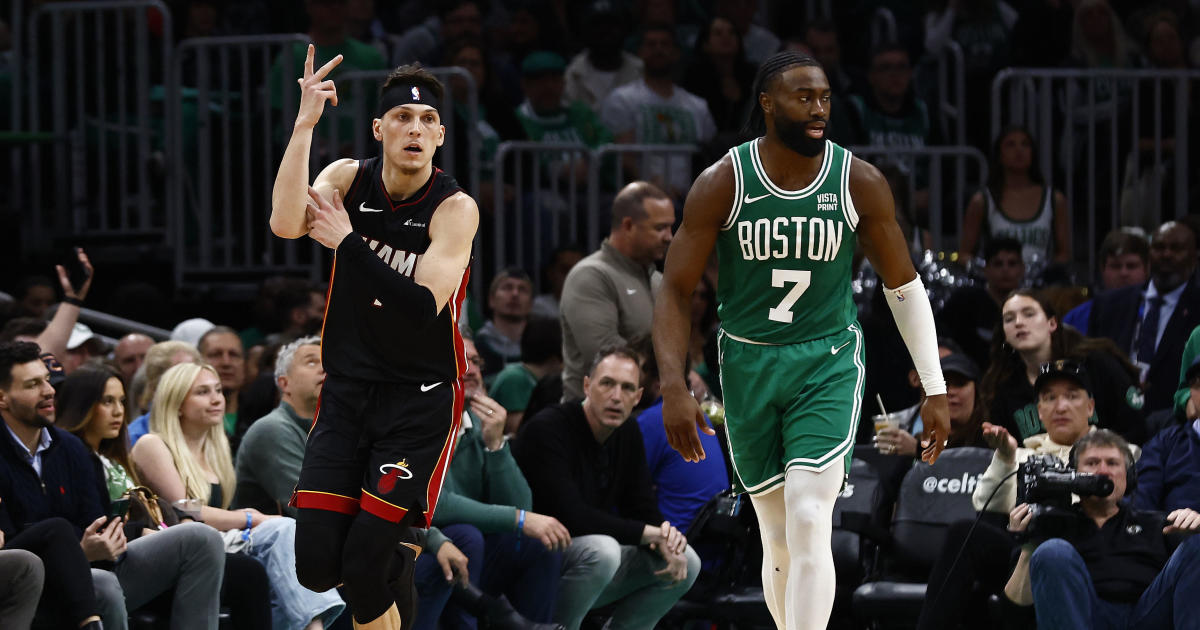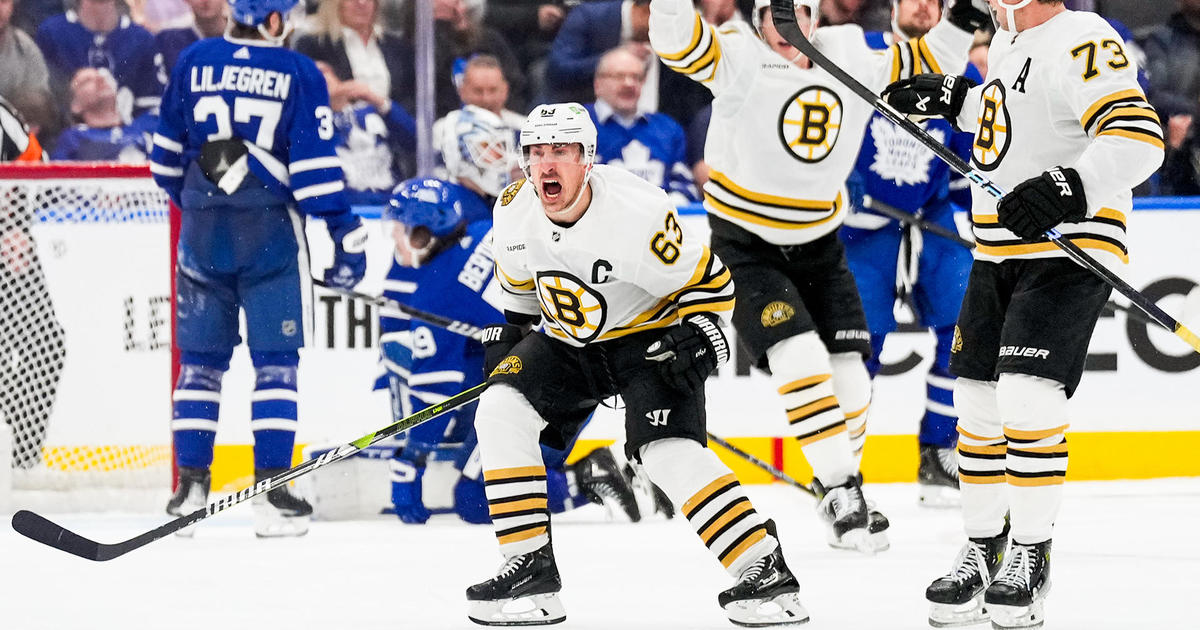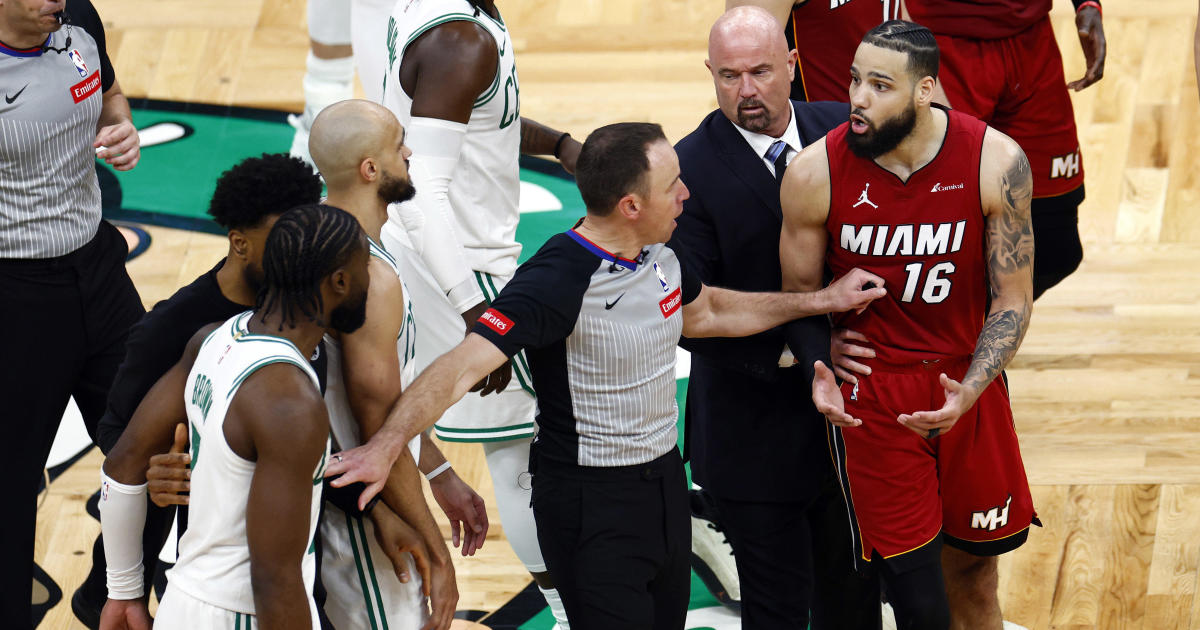Kaufman: In Defense Of Marcus Smart
BOSTON (CBS) -- Who would you rather have, Celtics fans?
Over his first four seasons in the NBA, Player A suited up for 237 games and started just 30. Over 23.6 minutes per, he averaged 8.7 points, three rebounds, 3.8 assists, and one steal, while shooting 42.1 percent from the field, 26.4 percent from 3, and 77 percent from the line. According to Basketball-Reference, his offensive rating was 110 and defensive rating was 109.
Player B, his first three years, appeared in 207 games and started 72. Over 28.4 minutes on average, he compiled 9.3 points, 3.8 rebounds, 3.7 assists, and 1.5 steals. He shot 35.8 percent from the field, 29.1 percent from 3, and 76.2 percent from the line, with an offensive rating of 101 and a 105 defensive mark.
Think long and hard.
Player B played one fewer season – just 30 games, however, and with 42 more starts – and was the better statistical player in virtually every category, though not quite the overall shooter. Superior from distance, not as good inside the arc. Their ratings were similar, with the edge to Player A on offense and Player B on defense.
Both were born in March, three weeks apart, but Player B was a year younger at this stage of his career.
Ready?
Player A is Kyle Lowry.
Player B, Marcus Smart.
Yes, you can make a compelling argument the Celtics' former sixth overall pick has been better the first few years of his early-20s than a player who has been an All-Star each of the last three seasons and averaged 19.7 points, 6.9 assists, 3.9 rebounds, and 1.7 steals the last four.
Of course, it's not crazy to think a player limited by injury or opportunity his first few campaigns could break out as he hits his prime. Look at James Harden (12.7 points per game his first three years), Kawhi Leonard (10.9 per his first three), Paul George (10 per his first two), or Jimmy Butler (8.9 per his first three), to name a few recent examples.
The especially noteworthy connection between Lowry and Smart, though, is the shooting.
Long has been narrative, 'If you can't shoot, ya can't shoot, and Danny Ainge loves himself a defensive-minded pick who can't shoot!' Of course, Ainge has never subscribed to that theory. The Celtics president of basketball operations has said numerous times in the past that Smart works tirelessly on his shot and by virtue of his work ethic he's going to improve.
Consider Lowry, a comp noted by The Ringer's Kevin O'Connor in a recent piece examining the many questions facing the Celts going forward. After shooting respectively from the field and incredibly poorly from beyond the arc, the guard took a turn when he became a starter as a 24-year-old for Houston in 2010-11. In seven seasons since, Lowry's shot 42.5 percent and a much-improved 37.8 percent from 3.
This season, at 30, Lowry reached new personal-highs in almost every category, including scoring (22.4 points), shooting percentage (46.4), 3-point rate (41.2 on a career-best 7.8 attempts per game), and 4.8 rebounds. His offensive rating was 123, per Basketball-Reference, while his defensive rating was 109.
There's hope for Smart, whose free throw success has risen from 64.6 percent to 81.2 percent from year one to year three as his efforts from the field have been inconsistent. For instance, over nine contests from the start of Boston's second-round series with Washington through an embarrassing 44-point loss to Cleveland in the second game of East finals, the guard shot 32.1 percent and just 33 percent from 3.
In Game 3 against the Cavaliers, Smart buried eight of 14 shots and a ridiculous seven of 10 from 3 as if Isaiah Thomas jumped into his body like something out of The 6th Man.
"I just kept telling myself, 'You have nothing to lose, just go out there and play,'" Smart said after the improbable win. "You've been working hard throughout this whole year on your game. Just let it flow and let it show."
He has. Over 16 playoff games, Smart's shooting 37.3 percent and 41.3 percent from long-range after knocking down 28.3 percent of those efforts during the regular season at a consistent four-try-a-game average.
He does this. Every year, it seems, Smart will go on an eight-or-so-game-run and convert on damn near 50 percent of his treys, providing hope for a fan base already in love with the defensive side of his game and desperate to witness offensive growth.
It's difficult sometimes to remember Smart has only been 23 for two months.
You can't teach effort, intensity, or heart. Those immeasurables would have general managers around the Association salivating for a whole team of Marcus Smarts. There's a reason Brad Stevens views him as the team's sixth starter when everyone's healthy, or why he so often defines his occasionally flop-happy warrior by "winning plays" that demand his presence on the floor late in close games no matter what shooting woes or minor mistakes may have occurred prior. A box-out, a rebound, a steal, a forced turnover. You get the picture.
Others have taken notice.
Similarly, Lowry made his bones as a tough, tenacious defender known for flashing game-altering instincts early in his career as his offense developed, but the Grizzlies and Rockets weren't willing to wait. Memphis shipped him out for Adonal Foyle, Mike Wilks, and a 27th overall pick in a three-team trade with Orlando in 2009. Houston flipped him to Toronto in 2012 for Gary Forbes and an eventual 12th pick. Now he's reached max player and franchise cornerstone status.
This is all relevant because, as O'Connor outlined, the Celtics are facing some very difficult choices in the next year. The two-time All-Star Thomas and highly regarded two-way player Avery Bradley are on track to be unrestricted free agents during the 2018 summer and they'll command at least $20 million per year, Smart will be restricted, Terry Rozier will still be on his rookie contract, and projected No. 1 overall pick Markelle Fultz will (likely) be wearing green. That's all to say Ainge elects to use the pick with the conventional norm and doesn't move any other members of his backcourt before their contracts are up. As of now, those five would be due, roughly, a combined $28 million next year. To say that's absurd wouldn't cover it.
No one player or asset currently in Ainge's treasure chest is untouchable; not Thomas nor the top choice in the June 22 draft. But, provided his objective is contending during a window that extends beyond LeBron James's East-wide domination, he must examine both the long and short-term. Smart's value as a defensive bulldog and one of the better perimeter annoyances to his opponents is already well known and, if you have four minutes, feel free to enjoy a highlight reel of examples from this season alone.
His fearless character and toughness are regarded and often highlighted by those who share the C's dressing room.
But the offensive side is progressing for Smart as well. His playmaking and passing abilities showcased throughout much of this season are evidence he can be not only a true point guard in the league but also a regular starter rather than a mere fill-in. Again, highlights.
It's possible, even likely, Smart will never reach Lowry's offensive ceiling. When it comes to shooters going from bad to elite, perhaps the Raptors All-Star is the exception to the rule. Still, with years of control over where Smart calls his basketball home, wouldn't you like to find out?




